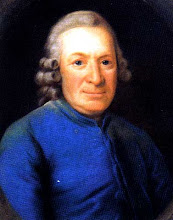Introduction
I have found that the contemporaneous administration of the precursors for dopamine and serotonin has widespread therapeutic applications. Using sequential suspensions of levodopa and 5-HTP when administered according to what I call the PURSOR (patent applied for) protocol, one can remit addictive craving, mood disorders and correct certain immune disorders. If interested, you can review my thoughts on PURSOR and the immune system and my thoughts on why this approach for Parkinson's disease may be most rewarding.
The PURSOR protocol employs a serendipitous finding. Both of these precursors in suspension with flavoring agents are at the onset initially pleasant. Continued administration and each suspension becomes bland to taste and then unpleasant. The loss of pleasant taste appears to correlate with repair of the inherent CNS deficiency. Incidentally, you can also produce this phenomenon at home by mixing a 0.5 tablespoon or so of MSG. (sold as Accent in the USA) with a third of a packet of an artificial sweetener. Dip a wetted finger in the powder and it is sweet. Continue to do so and it becomes salty and not pleasant. Why this happens I do not know.
PURSOR Procedure and Protocol
I leave the exact formulation for PURSOR with the formulating pharmacy in California, but this is the general idea.
- For the 5-HTP admixture one combines powdered 5-HTP with an oil. A simple sugar syrup is added, it has an inherent pleasant taste. Other inert materials suggested by the formulating pharmacist are added. This is placed in a 30cc. bottle
- For the levodopa, same thing. Also added is an artificial sweetener and tangerine flavoring, etc. This is placed in a 30 cc. opaque bottle and refrigerated. Levodopa oxidizes readily.
After the 5-HTP endpoint is achieved, do the same with the levodopa suspension. The whole sequence takes about 3 minutes Were the patient craving alcohol or cocaine, severely depressed and anxious and suffering from asthma, in a moment all these disorders remit. When craving or the other conditions return, they can be effectively managed by repeating the procedure. 2-3 times a day usually suffices. The response rate for craving alcohol, methamphetamine and cocaine is nearly 100% and nearly the same for affective disorders and immediate hypersensitivity. The preliminary results with opiates is promising.
Some patients find only one suspension pleasant. I have interpreted this to mean that there is no inherent CNS deficit for this particular neurotransmitter. Control patients rarely have found both to be unpleasant from the start.
You urge the patient to swish the suspensions around in the mouth as long as possible. Since they don't spit, they swallow the residual.
Were you to immediately swallow, the respective precursors would be absorbed in the alimentary tract, pass first through the liver and be there decaboxylated to either DA or 5-HT. Absorption through the buccal and lingual mucosa permits the first pass to the brain. No need for a decarboxylase inhibitor such as carbidopa.
Addictive Craving
In 1993, I introduced Dr. Richard Rothman, director of NIDA's Intramural Research Program in Baltimore, to the idea that combined dopamine and serotonin agonists (CODAS) could treat addiction and other disorders. I have gone on and used levodopa and 5-HTP (PURSOR) as the best way to manage same. Richard has gone in another direction. In this recent article, he reviews the rationale behind CODAS and discusses his recent work.Sample Results
Recently, in a two week period, practitioners in Colorado and Sacramento started PURSOR on seven new patients. All but one of them were craving either alcohol, cocaine or methamphetamine. All but two of them were suffering from anxiety and/or depression. In every case, the patients enjoyed total relief of craving and their mood disorders in minutes. The return of any of their symptoms (craving or dysphoria) signals the need for the next treatment. One patient is enjoying total relief from his chronic rhinitis. He is letting his stuffy nose tell him when he should take the next dose.
- You may wish to review a brief PowerPoint Presentation).
- This is the Google site hyperlink.
Pietr Hitzig, M.D.
Baltimore, MD
phitz96@gmail.com
Google Site: http://foxyurl.com/7Bh
PowerPoint: http://bit.ly/2UbPrN
443 231-6240





No comments:
Post a Comment